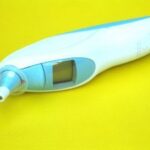A thermal scanner takes a measurement of the reflection of electromagnetic energy emitted in the infrared spectrum (wavelengths in the range 10-4 – 10-6). All objects with a temperature 0o degrees Kelvin emit electromagnetic energy. That baseline temperature varies as it is heated by solar radiation or other power sources. Because of this ability to sense differences in temperatures of known objects, thermal scanners can aid many industries. Chances are, your job will furnish an infrared thermometer, if you work in one of the industries listed below. They provide a useful function in test diagnosis and research. If you are considering buying one and are self-employed at any of the following tasks, you might find a thermal scanner very useful, especially the infrared thermometer devices that are portable and have an average price in the range of $100-300. If you work as an entrepreneurial engineer, thermal scanner components run in about the same range for use in building systems. If you work in scientific research or as an architect for a large corporation or government, large thermal scanner arrays that are airborne or available from satellites maybe purchased to support many projects.
Thermister, or Thermal Scanner Components
Engineers buy thermal scanner components for use as sensors in equipment of all types. Large manufacturing equipment comes with installed thermal scanner components as test equipment. Overheating of a part can warn of failure. Servicing of parts can prevent those failures and keep equipment running smoothly. The sensors are often attached to a circuit board or circuit and can be monitored electronically or as a thermal switch. Nodding thermal scanners are also used in guidance and tracking.
Infrared Thermometer
An internet search for thermal scanner will often bring up infrared thermometers, which are small handheld devices used in a number of industries to search for temperature differentials.
Automotive Mechanics or Technicians find infrared thermometer devices useful for troubleshooting problems with a vehicle’s air conditioning, radiator, engine, catalytic converter, and brakes and tires.
Doctors, Nurses and Chiropractor’s use special infrared thermometers in diagnosis. Chiropractors look for differences along the spine that indicate tense muscles around locked disks, using a rolling segmented thermal scanner.
Health Services for infrared thermometers in testing food quality problems.
Firefighters use thermal scanners to locate persons and to locate the source of a fire in smoky conditions, according to wikipedia.com
Power Technicians use thermal scanners to identify overheated parts in circuits, according to wikipedia.com.
Real Estate Inspectors and Insurance Adjustors can use a thermal scanner to identify points of heat loss and with equipment and with some electrical subsystems, a yearly inspection is required. See Pyro Thermal Line Scanner
Security organizations are testing thermal scanner for use in identifying weapons on persons.
Ghost Hunters uses them to find unexplained heat sources in a room and take pictures of them.
Airborne or Satellite Thermal Scanner Array
If you work in scientific research or as an architect for a large corporation or government you may request an airborne thermal scan for a number of reasons, see TIMS .
City Governments may want to know potential sources of heat leaks and moisture profiles that contribute to a trend of city warming, a localized phenomenon similar to global warming.
Archaeologists use thermal scanner array data to locate stone in areas where vegetation or water is expected as the potential location of ruins.
Weather researchers use thermal scanner array data to monitor the effects of green house gases, human activity, sources of methane, and weather patterns.
Petrochemical companies and geologists use thermal studies to locate sources of geothermal activity and for mapping.
Marine research uses thermal scanning to count populations of large mammals, see U.S. Fish and Wildlife Management, Alaska.




